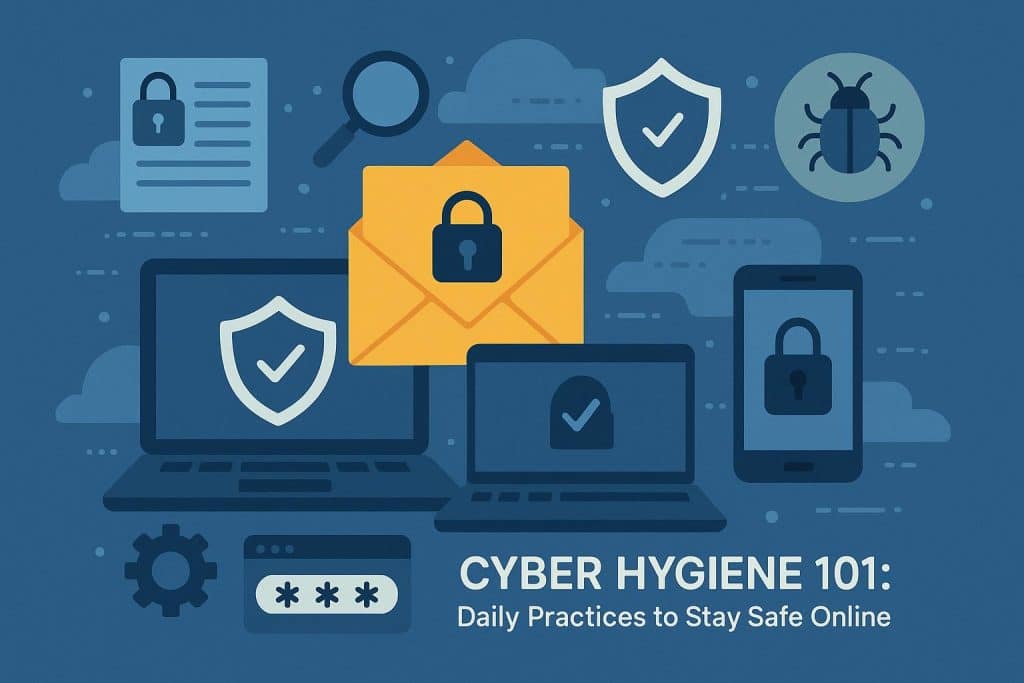In an era where cyber threats evolve faster than most people can keep track of, maintaining strong cyber hygiene has become just as important as locking your front door. Every device you use, every password you create, and every link you click can either reinforce your digital security or quietly expose you to unnecessary risk. While larger organisations often rely on expert support like managed SOC services, people can greatly strengthen their own safety by adopting a few consistent daily habits.
Strong cyber hygiene isn’t complicated—it’s about building simple, repeatable routines that significantly reduce your chances of becoming a target. Below are the essential daily practices everyone should follow to stay safe online.
Use Strong, Unique Passwords for Every Account
Weak or reused passwords remain one of the biggest security risks. Attackers often use stolen password databases to break into accounts through “credential stuffing,” where they test known credentials across different platforms.
To strengthen your password hygiene:
- Use long passphrases instead of single words
- Avoid reusing passwords across accounts
- Store your credentials in a reputable password manager
- Enable automatic password generation tools where possible
A strong, unique password for each account creates a crucial barrier that cyber criminals struggle to bypass.
Enable Multi-Factor Authentication (MFA)
Multi-factor authentication is one of the most effective ways to stop unauthorised access, even if your password becomes compromised. MFA requires you to verify your identity using a second method—typically a text code, authentication app, or biometric scan.
Make MFA a priority for your:
- Email accounts
- Banking and financial apps
- Social media profiles
- Cloud storage platforms
If a platform offers MFA, enabling it should be non-negotiable.
Think Before You Click—Avoid Phishing Traps
Phishing attacks are becoming increasingly sophisticated. They’re no longer just poorly written emails; they now mimic brands perfectly, use personalised information, and create a sense of urgency to lure you in.
Stay vigilant by checking:
- The email sender’s address carefully
- Whether links match legitimate URLs
- Spelling or formatting mistakes
- Unexpected requests for personal information
If something feels off—even slightly—don’t click. Visit the company’s website directly instead.
Update Your Devices and Apps Regularly
Cyber criminals actively exploit software vulnerabilities, which means outdated devices create an easy pathway into your personal data. Updates often include essential security patches designed to close these gaps.
Make it a daily habit to:
- Enable automatic updates
- Restart devices when prompted
- Remove apps you no longer use (they also pose risks if unmaintained)
Think of updates as digital vaccinations—they protect you from known cyber threats.
Secure Your Home Wi-Fi Network
Your home network is the gateway to all your connected devices. An unsecured Wi-Fi connection allows attackers to intercept data, access devices, or impersonate you online.
Protect your home network by:
- Changing the default router password
- Using WPA3 encryption where available
- Disabling remote router access unless necessary
- Creating a separate guest network for visitors
These steps help ensure no one is quietly piggybacking on your connection.
Back Up Important Data Daily
Ransomware attacks continue to rise, targeting both individuals and businesses. Regular backups ensure you don’t lose access to important photos, documents, or financial records.
You can back up your data:
- To an encrypted external hard drive
- To a reputable cloud storage provider
- Through automatic backup features on your devices
Daily backups minimise your vulnerability to data loss and help you recover quickly if something goes wrong.
Use Antivirus and Anti-Malware Tools
Even the most cautious online users can encounter hidden threats. Antivirus and anti-malware software add a much-needed extra layer of defence.
To maximise protection:
- Enable real-time scanning
- Run quick scans daily
- Keep virus definitions up to date
- Avoid downloading software from unknown sources
A well-maintained security tool helps detect threats long before they cause harm.
Monitor Your Accounts for Unusual Activity
Catching suspicious activity early can prevent minor breaches from turning into major compromises. Spend a moment each day reviewing key accounts.
Look for:
- Login attempts you don’t recognise
- Alerts about password resets
- Strange messages sent from your accounts
- Transactions you didn’t authorise
If anything looks unusual, change your password immediately and enable additional security features.
Be Mindful of Public Wi-Fi
Public Wi-Fi networks—while convenient—are notoriously risky. Cyber attackers can intercept data, mimic network names, or access your device if your settings are too permissive.
When using public Wi-Fi:
- Avoid logging into banking or sensitive accounts
- Use a VPN wherever possible
- Disable automatic Wi-Fi connections
- Turn off file sharing
A few precautions can drastically reduce the danger of connecting in public spaces.
Daily cyber hygiene doesn’t require technical expertise—it simply requires consistency and awareness
Each small action compounds to create a strong, resilient defence against evolving digital threats. By building these habits into your everyday routine, you create a safer online environment for yourself and those around you.
If you’re proactive about your digital safety today, you’re far less likely to face serious cyber issues tomorrow.
